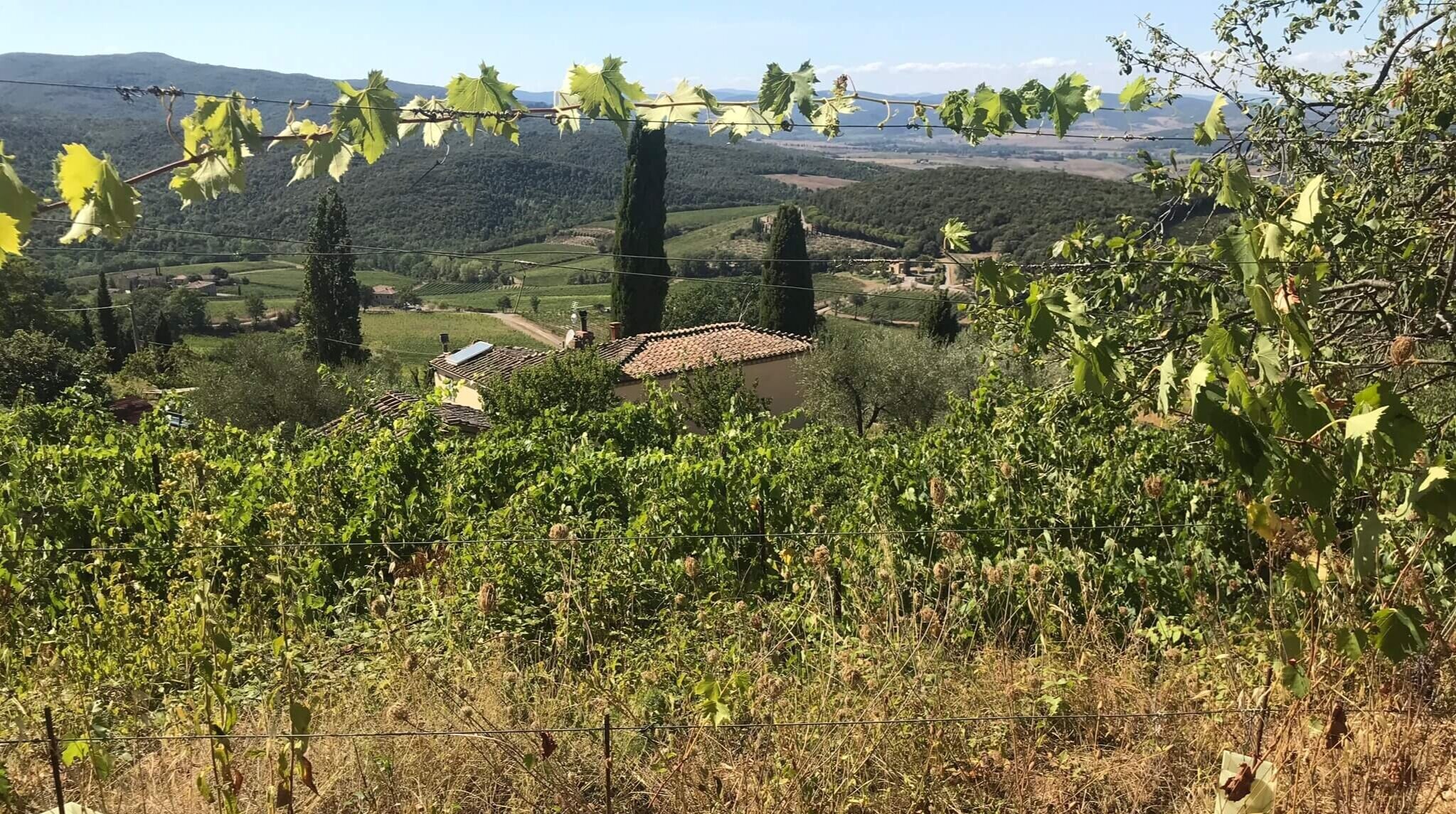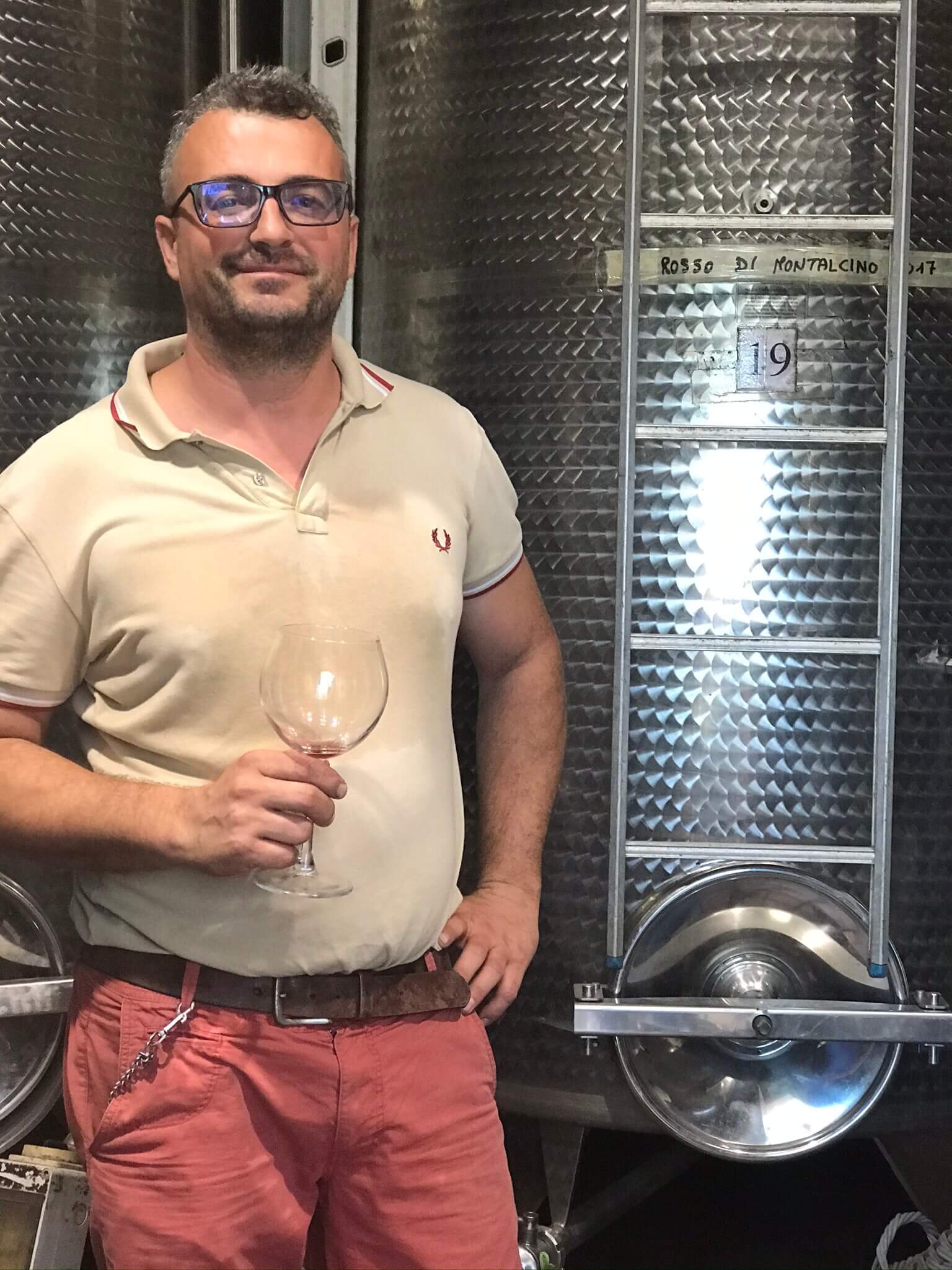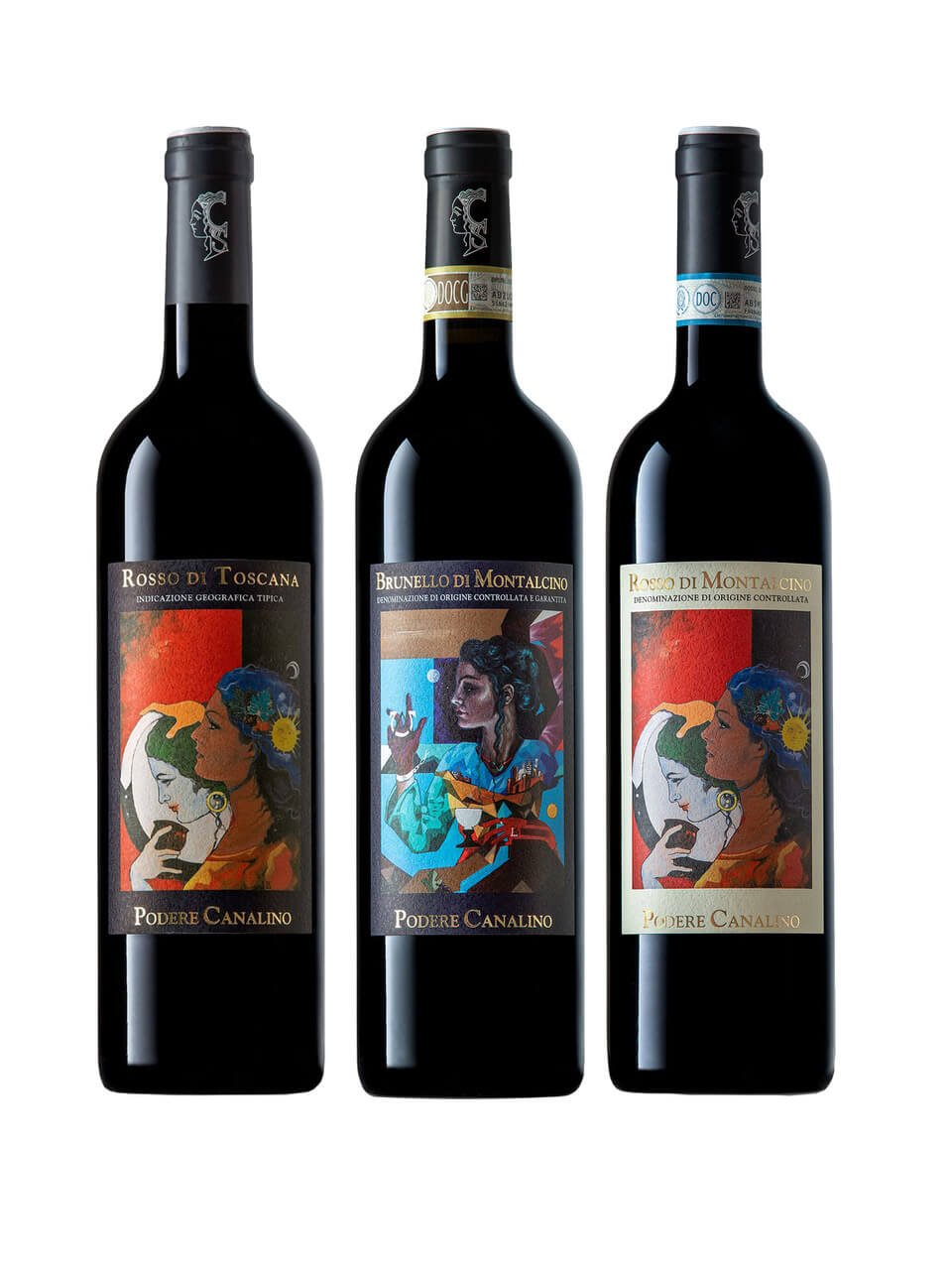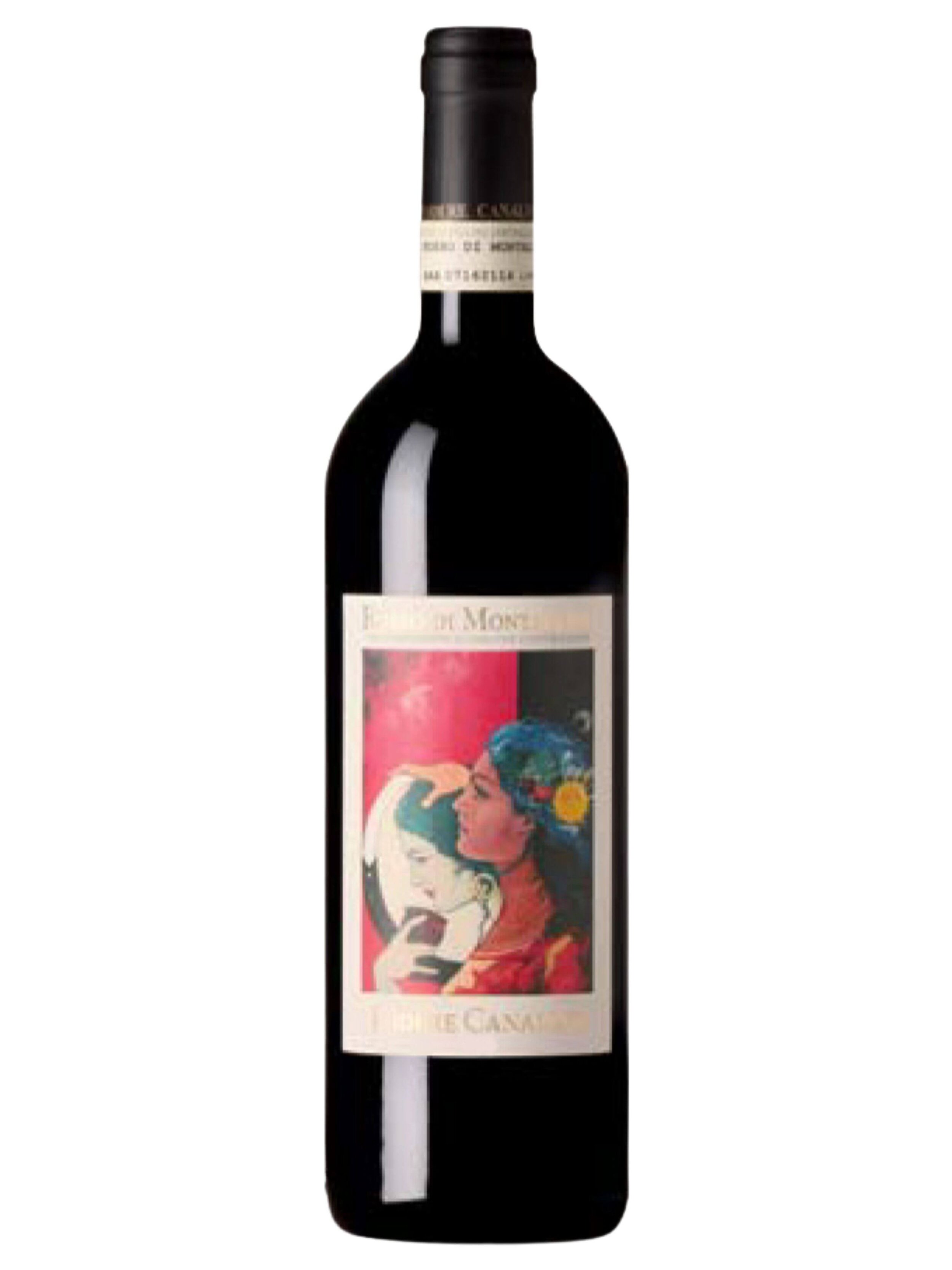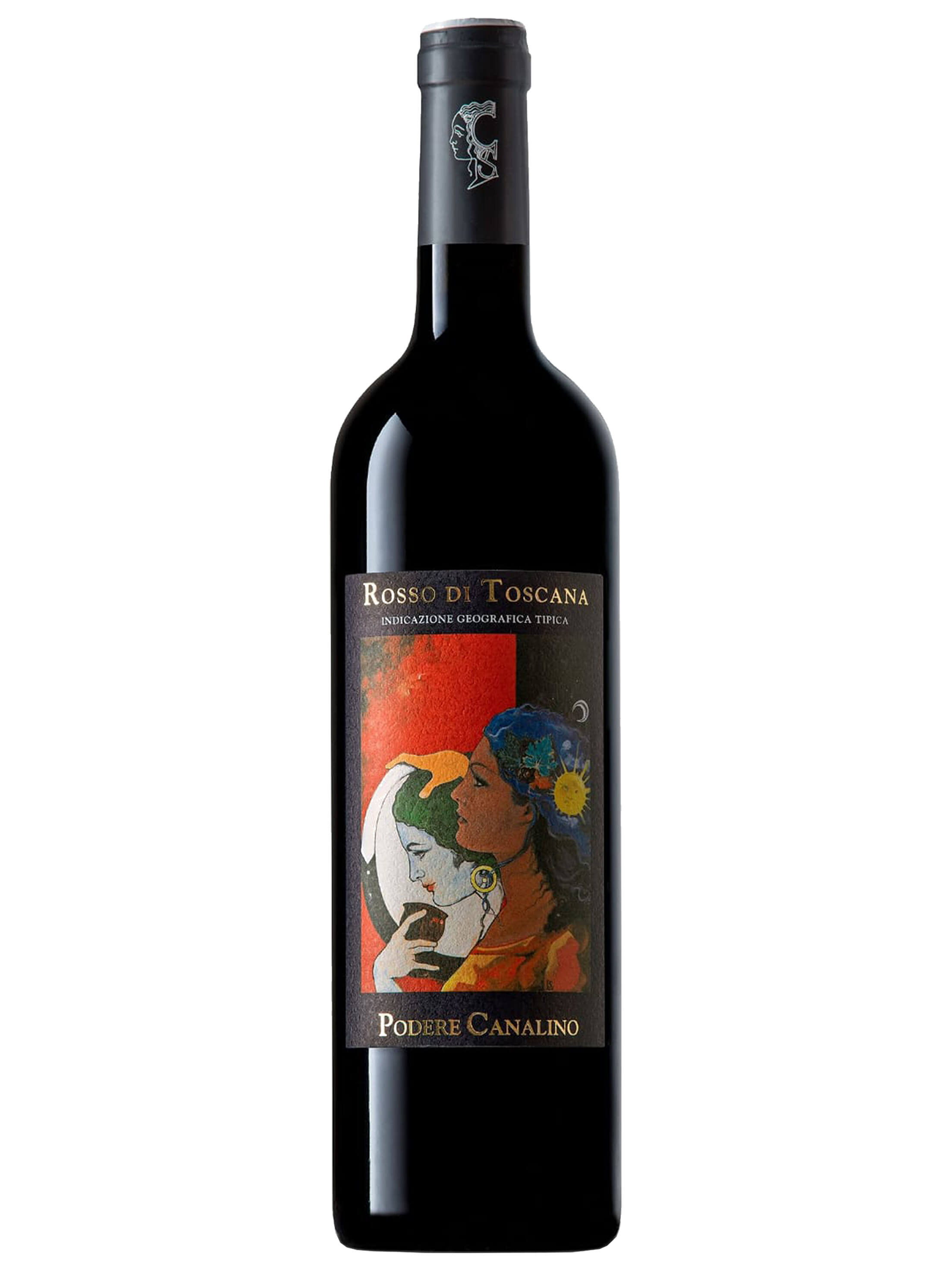To the Heart of Tuscan Wine Country: Montalcino
"One of the 12 most exquisite wines in the world" is how Wine Spectator described Brunello di Montalcino in 1999. Seven years later in 2006, they doubled down and named Brunello di Montalcino the best wine in the world!
With wine critic James Suckling saying 2015 and 2016 are Brunello's greatest vintages ever, there's never been a better moment to learn more about Brunello di Montalcino. Let's dive in together. In this article, we’ll tell you about the fascinating history of Brunello, where and how it's made, and why it can cost so much, plus a very valid and more wallet-friendly option for you to try!
From the name Brunello di Montalcino, we can tell that we are talking about a wine made in Italy, but where in the boot is this wine produced?
The History of Brunello
It is made in Montalcino, a small town in southern Tuscany, about forty-five minutes south of Siena.
Archaeological finds show that wine has been produced in this area for over 2000 years and for good reason. Thanks to various exposures, microclimates, and soil types, the hilly location is ideal for growing grapes. Late frosts and ice are kept at bay by favorable winds, and the Apennine Mountain range to the east and Mount Amiata, a dormant volcano, to the south protect the area from harsh storms and hail. Also, Montalcino is considered the most arid and hottest parts of Tuscany in the summer. But general rule of thumb is the more a grape suffers that better the wine it makes, so there you go! Montalcino and the Sangiovese Grosso grape are a match made in heaven for red wine lovers.
Despite the 2000+ year old tradition of winemaking in this area, it may surprise you to find out that until the 1800s, the main grape grown in this area was white. It was Moscato which was used to make the sweet, white wine Moscadella.
It wasn’t until the 1800s that local farmers started experimenting with a native grape variety cultivated in the surrounding territory. The grape was known as "Brunello" or "Brunellino," until it was identified as a biotype of Sangiovese, called Sangiovese Grosso.
Clemente Santi, known as the founding father of Brunello, was a local chemist and viticulture lover and was the first person to make a wine 100% from Sangiovese Grosso. He was met with great success, and in 1869, his 1865 vintage was awarded a silver medal by the Agrarian Committee of Montepulciano. The wine was awarded other significant international recognition in the following years and was even preferred to French wine in Paris and Bordeaux.
It would, however, take many years for Brunello to truly catch on at an international level. The small number of Brunello producers and the small quantities of wine they were producing made exportation difficult. Despite early attempts, the global market was only conquered after 1980 when more wineries opened and production increased. For context, in the 1960s, there were 11 producers. In the 1970s, the number had doubled to 25 producers. In the 1980s, there were 53 producers, and today there are over 200.
Alberto Pagliantini of Canalino Winery proudly displaying his wine awaiting to be moved into the barrels.
During the last half of the 20th century, Brunello became first a DOC wine (Denomination of Origin Controlled). Then in 1980, it became the first ever DOCG (Denomination of Origin Controlled and Guaranteed), a superior designation for select wines in Italy bearing a specific seal from the government in Italy.
Another crucial step in the wine's history was in 1967 when the Brunello Consortium was founded. This body would set forth stringent rules and regulations for making Brunello di Montalcino and Rosso di Montalcino. Producers must follow these rules in order to call their wines Brunello di Montalcino or Rosso di Montalcino.
So, what are these very important rules? Let's take a look and explore the difference between Brunello versus Rosso di Montalcino.
What Makes a Brunello a Brunello?
Both wines, Rosso di Montalcino and Brunello di Montalcino, are made from the same grape: Sangiovese Grosso. The wines must be 100% Sangiovese Grosso and cannot include any other kind of grape.
Brunello di Montalcino, a DOCG, must be aged for 4 years minimum, and spend at least two years in wooden barrels. It cannot be released on the market before January 1st of the fifth year after harvesting. For example, this year's harvest will not be released until 2026. Although not a consortium requirement, producers often choose make a special selection and use only their best grapes for the Brunello di Montalcino. It is not uncommon that during a bad year, a producer will decide not to make a Brunello di Montalcino at all and instead will just put all the grapes to the production of the Rosso di Montalcino.
The Rosso di Montalcino, a DOC appellation, must be aged for at least 10 months and is not required to spend any time in wood.
As you can imagine, even though both wines are made from the same type of grape, there is a distinct difference between the characteristics of the Brunello and the Rosso di Montalcino.
A barrel of Rosso di Montalcino, peacefully aging at Canalino winery in Montalcino
The Sangiovese Grosso grape lends itself well to bold, age-worthy red wines like Brunello as it is slow to ripen. Extra time on the vine allows for sugars to be more concentrated, resulting in higher alcohol and richer wines.
A specific Brunello di Montalcino’s characteristics and taste varies a lot depending upon where the grape comes from. The DOCG area is quite large and diverse, with different soils, and growing conditions. According to the Brunello Consortium it is has a bright garnet color, intense and complex scents with berries, spice and jam. Upon tasting, it is elegant, harmonious, warm, and dry with a long finish. This is a wine to be aged for 10+ years, thanks to high levels of tannins and acidity. There have even been bottles over 100 years old that have been tasted and are still good. Brunello di Montalcino pairs well with red meats, game meats, mushrooms, and aged cheeses. It is best served in ample, rounded crystal glasses, which allow the harmonious bouquet to be fully appreciated. The ideal serving temperature is between 64-68 degrees F.
The Rosso di Montalcino is fresher and ready to drink sooner than its big brother Brunello. It tends to have a bright ruby red color with lots of reflections that signal its high acidity. The nose is intense with lots of fresh fruits and flowers. When tasting it, the wine is fresh, vigorous, dry, and warm. It prefers to be drunk in its youth but can be aged. It pairs nicely with pasta with meat sauce, risottos, mushrooms, truffles, pork, and veal.
This all sounds great, but let’s get down to numbers. Why do bottles of Brunello often cost $65-$75 with some even demanding upwards of $100-$150? It is due to the careful and rigorous selection of the grapes, the long time between harvesting and releasing it on the market, and the wine’s great potential to age.
Where to Find Good Brunello Wine
Want to try Brunello di Montalcino without breaking the bank? We have a solution for you!
There are still some family wineries in Montalcino that make smaller amounts of high-quality wine and sell it for more reasonable prices than the area’s bigger wineries. One such producer is Alberto Pagliantini at Canalino Winery. His beautiful estate that lies just outside the Porta Burelli gate of the historical center of Montalcino has been in his family for generations. His family, the Sodi’s of Montalcino, are reported to be managing a vineyard on their property going back to 1800, and prior, in 1650, the Monastery of Catherine of Siena owned a vineyard in Canalino, (meaning little canal), thanks to the natural spring on the property which has helped render the property productive for agriculture going back to the Middle Ages. In 1898, Giuseppe Sodi transferred his family to live on the property, calling it Podere Canalino. His grandparents also grew other fruit and vegetables on the family ‘farm’. Together with his dad in 1999 Alberto started to get ‘serious’ about winemaking and planted 4 hectares of vines amongst the abundant fruit and olive trees on the property. In 2004 they released their first wine on the market. They produce Rosso di Montalcino, Brunello di Montalcino, and a Tuscan Red. Alberto believes in minimal intervention both in the field and in the cellar, and the resulting wines are a wonderful, pure expression of the Sangiovese grape. His Rosso di Montalcino is fascinating as he ages it in wood barrels for extended periods, something not required for Rosso di Montalcino, thus creating what some would describe as a baby Brunello. You have many of the qualities and characteristics of a Brunello, but for at much lower cost. Likewise, Alberto also has another red wine from 100% Sangiovese Grosso that is also aged in oak for a period of time, Rosso di Toscana, that costs even less. All three are delicious and great to purchase together and do a side-by-side tasting. In fact, we have a limited time promotion Explore Montalcino Set, with free shipping at only $99.99 to try all 3 of Alberto’s delicious, natural sangiovese red wines.
Stayed tuned as next week, we will be sharing food pairing for Alberto's wines along with a recipe for a classic Montalcinese dish. We had a VeroTalk live with Alberto at his winery in Montalcino to learn more about Brunello, chat about his winery, and have a live wine tasting. You can watch the recording HERE. We tasted all three of Canalino’s wines, all bundled together in the exclusive Explore Montalcino Set, with free shipping! Order your wines today. Don't miss this fantastic opportunity to know these unique wines and one of Italy's most renowned and prestigious wine areas.
This article is written by Alex Smookler, founder and owner of Alex Smookler Travel, a Travel Design Company, who lives in Montalcino and moderated our VeroTalk you can watch with Alberto of Canalino Estate winery.

